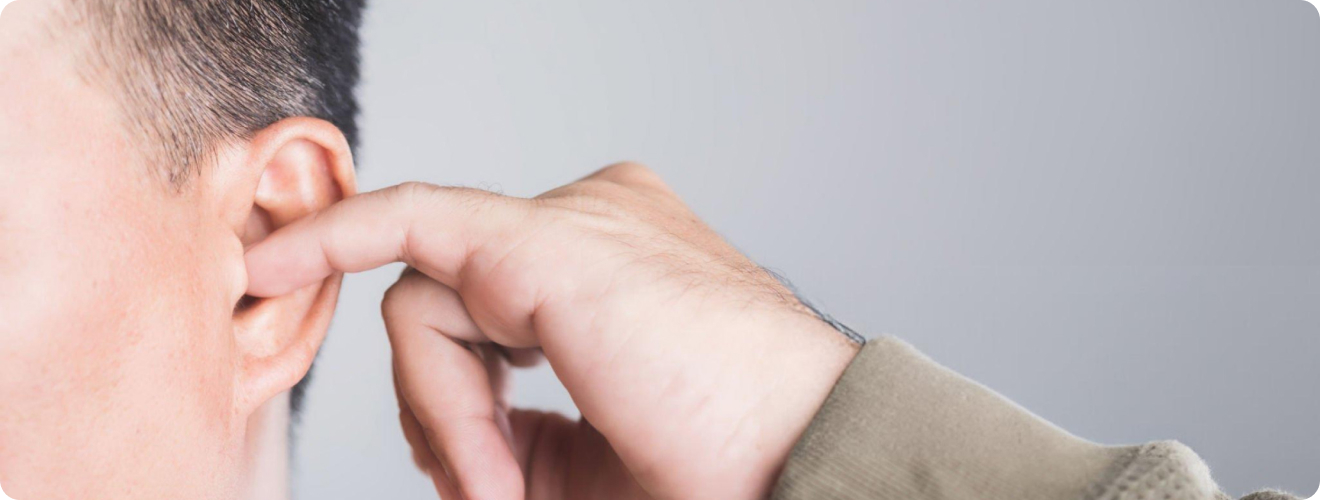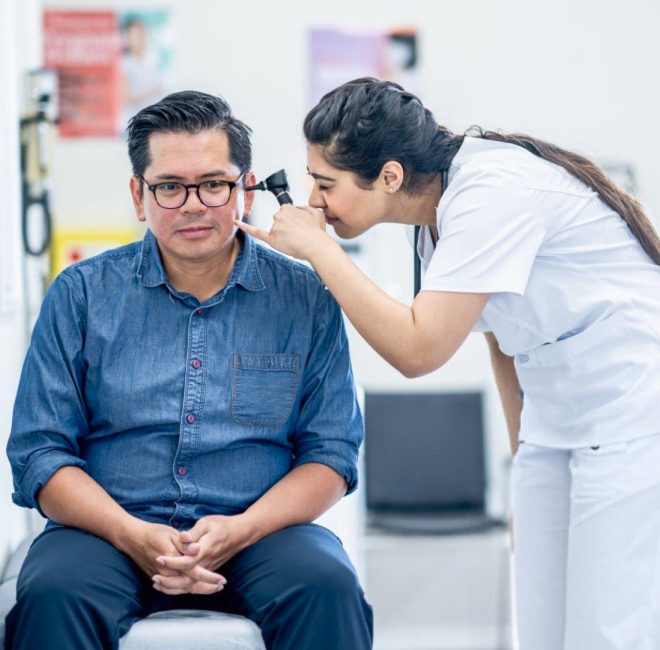


Earwax, or cerumen, is a naturally occurring substance that plays a vital role in maintaining the health and cleanliness of our ear canals. Far from being a sign of poor hygiene, it serves as a protective shield by capturing dust, dirt, and other foreign particles, stopping them from reaching the sensitive eardrum. It also possesses antibacterial and lubricating properties.
However, for some individuals, earwax can accumulate excessively, leading to a blockage that can cause discomfort, impair hearing, and even lead to more significant health issues. That’s exactly what we are going to discuss in this article. Read on to learn everything you need to know about earwax blockages and their effective management.
Earwax is a sticky material created by glands located in the outer section of the ear canal. What is earwax made of? It’s a natural mix of secretions from sebaceous and ceruminous glands, combined with dead skin cells and tiny hairs. Its purpose is multifaceted: it lubricates the ear canal, protects against water damage, and acts as a natural defence mechanism by trapping dust, bacteria, fungi, and small insects, preventing them from entering deeper into the ear.
Normally, earwax dries up and falls out of the ear naturally, often aided by jaw movements from chewing and talking. This self-cleaning mechanism works effectively for most people, but certain factors can disrupt this process, leading to a build-up.
An earwax blockage occurs when earwax accumulates faster than the ear can naturally clear it, or when something impedes its natural outward movement. Common causes include:
When earwax accumulates to the point of causing a blockage, it can manifest in various uncomfortable and potentially concerning symptoms. These often include:
While it might be tempting to try and remove earwax yourself, it’s crucial to know when to consult a healthcare professional. You should always consult a doctor if:
There are several safe and effective methods for earwax removal, both at home and professionally.
At-home options primarily involve using ear drops (mineral oil, olive oil, or sodium bicarbonate) to soften the wax, allowing it to naturally exit. It is important to never use cotton buds, as they often push wax deeper and can cause damage.
When at-home methods are insufficient or lead to concerns, professional removal is the safest course. This includes ear syringing/irrigation, where warm water gently flushes out the wax (only by a trained professional and not if the eardrum is perforated); micro suction, a highly effective method using gentle suction under direct vision; and manual removal, where a clinician uses specialized instruments to carefully extract the wax.

While complete prevention isn’t always possible, especially if you’re prone to excessive earwax production, there are steps you can take to minimise build-up and maintain healthy ears:
Earwax is a natural and beneficial part of our ear’s protective system. While it typically manages itself, blockages can occur, leading to uncomfortable symptoms and impaired hearing. Understanding the causes, recognising the signs, and crucially, opting for safe and appropriate removal methods are paramount. Self-treating with cotton buds can often worsen the problem or cause injury. When in doubt, or if symptoms are severe, always consult a healthcare professional. By adopting safe ear hygiene practices and seeking timely medical advice, you can ensure your ears remain healthy, functional, and free from unnecessary discomfort.
Sources:
Spread the love, follow us on our social media channels